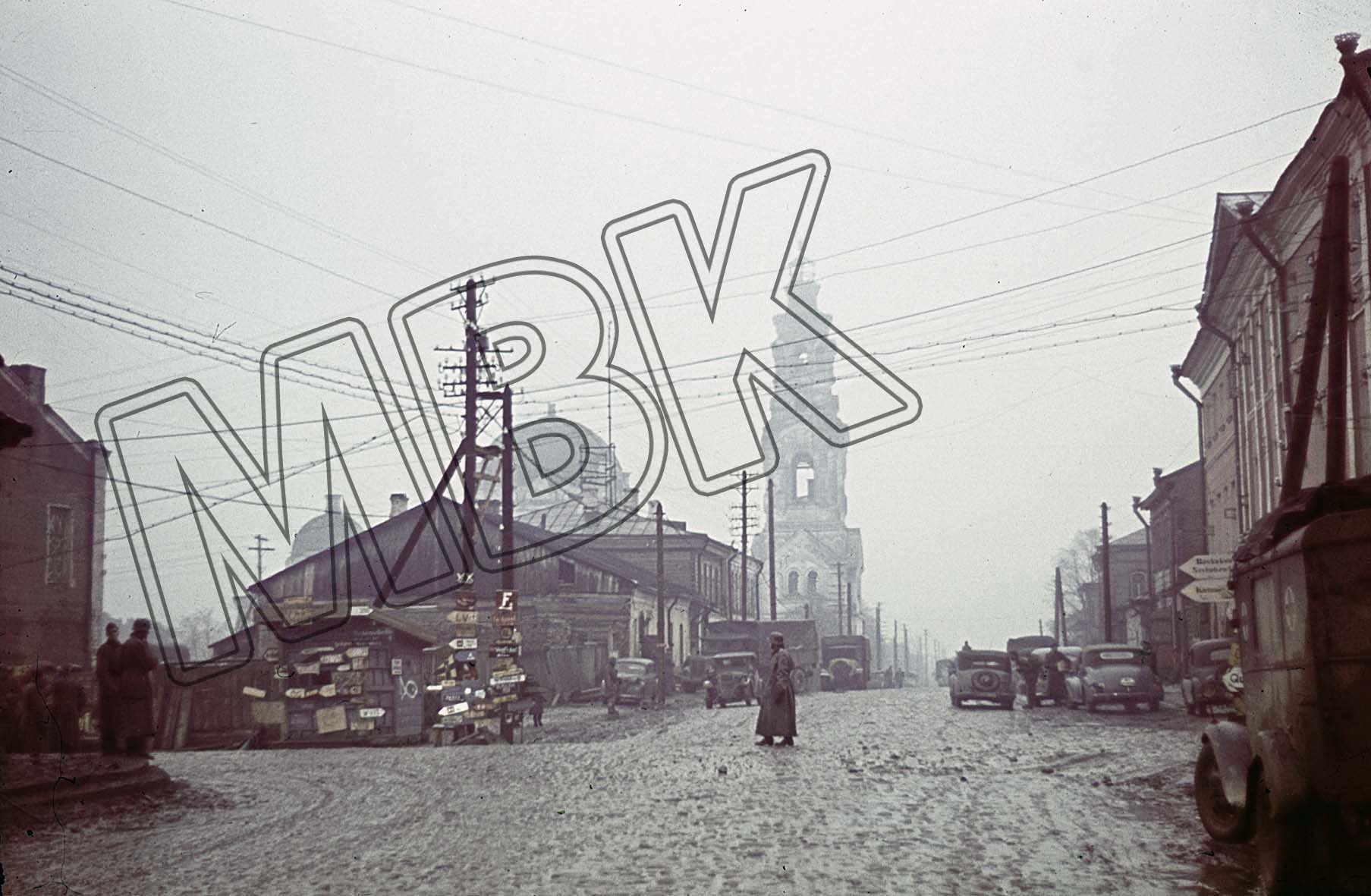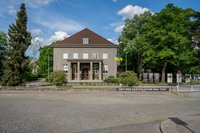Straßenszene nach dem Einmarsch der Wehrmacht in Gžatsk (Gshatsk), November 1941
Vgl. auch KH208427-264 + KH208427-226
Straßenszene bei sehr trübem Novemberwetter in der Stadt Gžatsk (nach 1968 hieß die Stadt Gagarin) im Gebiet Smolensk, rund 239 Kilometer nordöstlich der Gebietshauptstadt Smolensk an der Eisenbahnstrecke Moskau-Smolensk-Minsk gelegen. Sie hat 31.721 Einwohner (Stand 2010).
Es sind fast ausschließlich Wehrmachtsoldaten auf den Straßen unterwegs.
2 Hinweisschilder mit Ortsnamen "Baskakowo", "Szytschewka" und "Karmanowo" erkennbar.
Im Hintergrund eine Kirche.
Viele Fahrzeuge, LKW wie PKW, rechts vorne im Bild ein Fahrzeug mit Rotes Kreuz-Emblem
en

